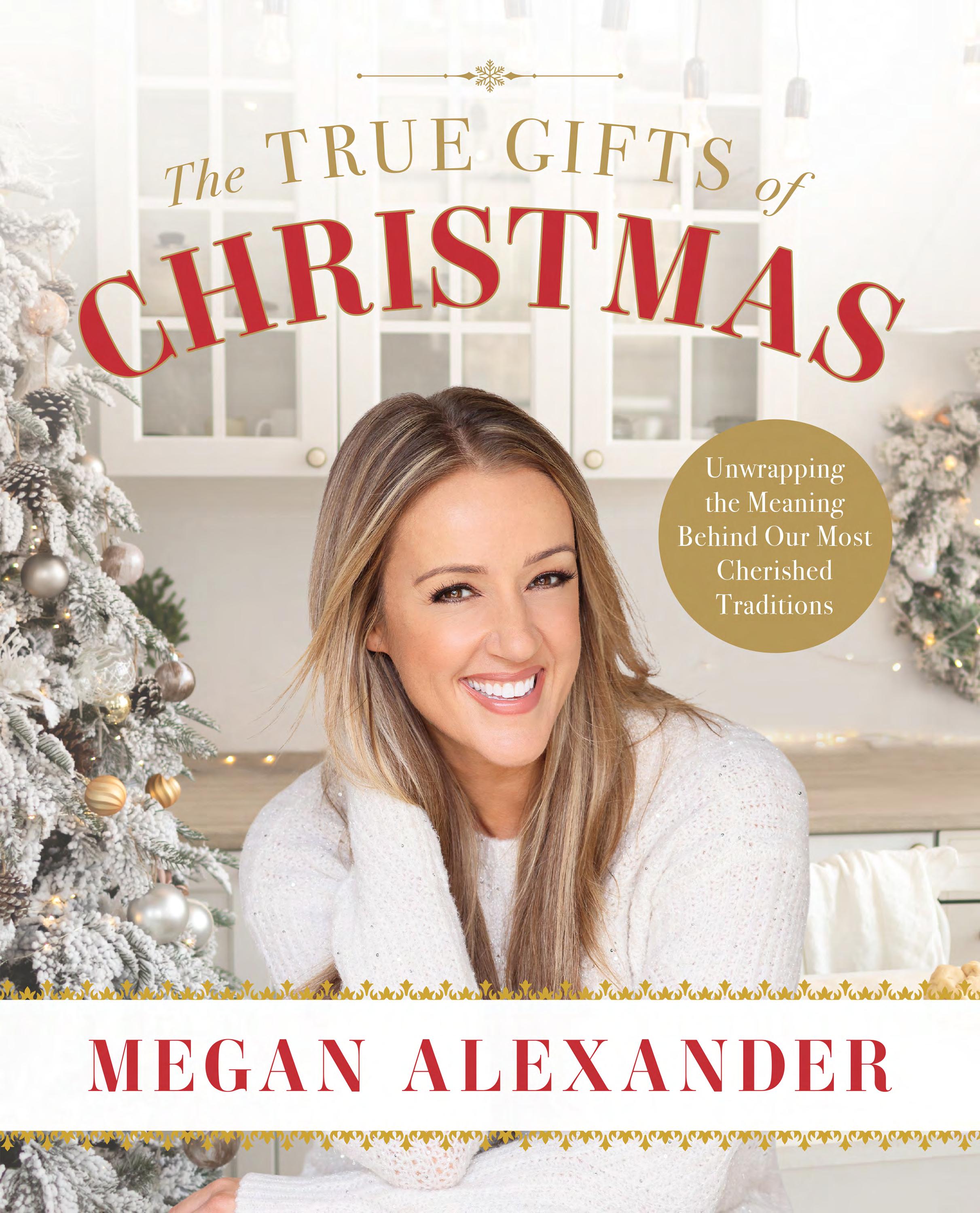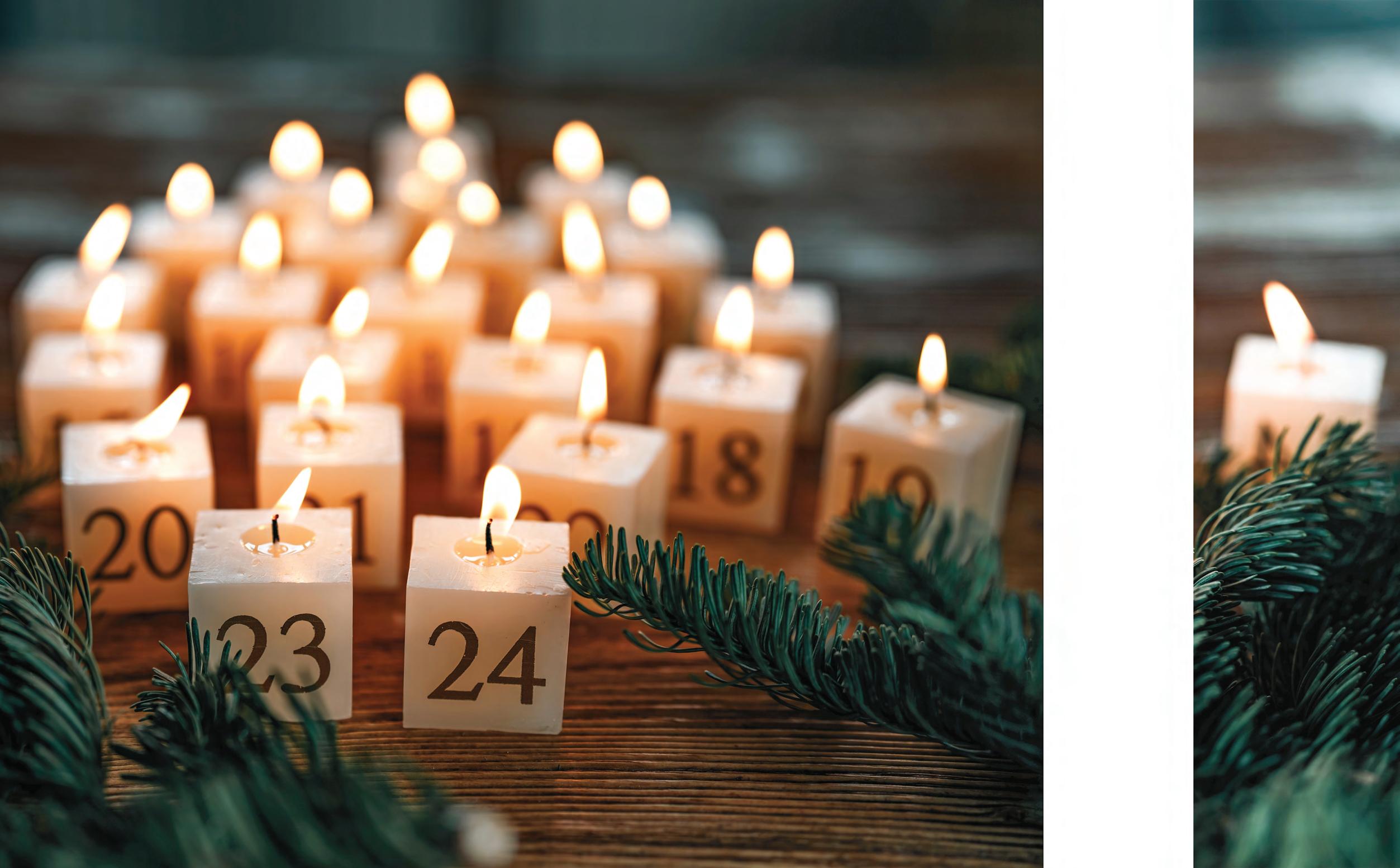

{ DAY } 1



{ DAY } 1

To prepare our hearts for Christmas, we must cultivate a spirit of expectancy.
—Reverend Handel H. Brown
Keeping the Spirit of Christmas 1

Okay. Full confession here. As I get older, I would say that it’s almost more fun looking forward to Christmas than it is actually celebrating on Christmas Day. Don’t get me wrong, I love Christmas morning and all the presents and joy like the rest of us. But the more I understand the historical significance and meaningful aspects of the holiday season, the more I enjoy the anticipation of Christmas. Does anyone else get goosebumps when you first spot Christmas decorations in the stores? I do! My kids and I love the first sight of our local Christmas tree lot beginning to go up or a Yule log cake in the grocery store bakery. It hints that something exciting is on the way.
Since around the fourth century, Christians have celebrated Advent as a time of anticipation and preparation. German Protestants in the mid-nineteenth century were likely the first to use Advent calendars, after using all sorts of creative ways to mark these important days of the Christian year. Parents can use Advent calendars as a teachable tool that gives their kids something to look forward to each day while also reflecting on the big day approaching and all it symbolizes.
We see Advent calendars in many shapes and sizes during the Christmas season. Each day from November 30 to December 25 has a little door to open. Behind each door is a chocolate candy, part of a picture, a tiny toy—some Advent calendars even offer a selection of teas. But rather than being about treats or trinkets, the calendar is a kind of devotional. The word advent, which comes from Latin, means “coming to” or “arriving at.” Advent, then, is a time of anticipation when we look forward to the arrival of Jesus.


This year, consider turning your Advent calendar into a gratitude calendar. As you open the door for each day, think of one thing to be grateful for as you look forward to Christmas Day. Another fun addition to the typical Advent calendar is to create your own with Christmas activities. Plan ahead by asking family members in November what their favorite Christmas traditions are, then assign one of those activities to each day of Advent. For example, December 1 m ight be ice skating; December 2 m ight be watching a Christmas movie. Another idea perfect for young children is to create a paper chain for each day of Advent. Using red and green paper, make twenty-five paper loops and tear one off each day as you count down to Christmas.


Look at the candy cane, what do you see?
Stripes that are red, like the blood shed for me.
White for my Savior, who is sinless and pure.
“J” is for Jesus My Lord, that’s for sure!
Turn it around and a staff you will see.
Jesus my shepherd who was born for me.
—Author unknown




We’ve all heard of an Easter egg hunt, but a candy cane hunt has become one of my favorite holiday traditions. We sprinkle candy canes all over our back lawn, and at dusk we invite the neighborhood kids to come over with flashlights to try to find as many candy canes as they can. We give a prize to the child who finds the most. Afterward, when the kids have settled down and are enjoying their treats, we talk about what religious significance we can find in the candy.
According to one legend, around 1670 a choirmaster at the Cologne Cathedral in Germany bent one end of a peppermint candy stick into a curve to represent a shepherd’s hook. And then when he turned the candy “hook” upside down, he explained that it became a J for Jesus. It is said that the choirmaster used the candy to hold the children’s attention as they learned about the birth of Jesus.
During the nineteenth century, Christmas cards featured all-white candy canes. We can find meaning in the colors of today’s typical candy canes: the white symbolizes the purity of Jesus, while the red represents the blood Jesus shed on the cross. Sometimes, a green stripe is added, which can signify that Jesus is an everlasting gift from God. The candy cane is much more than just a peppermint treat—it reminds us of the gift of Jesus.

Add a dash of adventure to your holiday celebration this year. Imagine the excitement as friends and family race to uncover hidden treats, laughing and searching high and low for those sweet holiday treasures.
I started by inviting families we knew from our neighborhood, but you could also make it a school or church activity. Even hiding candy canes around the house can be a fun challenge for your family.
Once the hunt is over, use the moment to invite others to share why Jesus and the Christmas season are important to them.

{ DAY }

One day, the cook went into the kitchen to make some gingerbread.
—Robert
Gaston Herbert The Gingerbread Man



Building and decorating a gingerbread house with cookies, icing, and candy is a rewarding, creative experience. I have such fun decorating gingerbread houses with my three kiddos each year! We usually keep it pretty basic, as my young kids tend to start eating all the decorations if we try to add too much complexity. But it’s a fun and simple way to build something together during the holidays.
Gingerbread is a perfect reminder of the warmth and joy that Christmas brings. Just the scent of gingerbread coming out of the oven is enough to make you feel as if you are being hugged by your home. One legend tells us that during the fifteenth century, unmarried girls would use gingerbread to find their future spouse. They would bake man-shaped cookies that were displayed at street fairs, with the superstition that the man who ate the cookie would fall in love with the woman who had baked it. During the seventeenth century, gingerbread was shaped into the image of religious icons, and the act of baking it was considered a sacred practice. Restrictions concerning the baking of gingerbread were enforced by the authorities. Only guild bakers were permitted to bake gingerbread during the calendar year. The edict was waived during Christmas and Easter, when everyone was allowed to bake the tasty, aromatic c oncoction.
Whether you’re married or single this Christmas season, whether you’re trying to keep little hands out of the frosting or crafting elaborate gingerbread castles, each time you catch the scent of gingerbread, remember the warmth that fills our kitchens and hearts during this special time of year.

Gingerbread cookies fill the home with the sweetest scent. Here’s a favorite gingerbread cookie recipe straight from my house to yours!
And for the single folks— who’s up for trying the gingerbread “find-your-future-spouse” taste test?
If you are, let me know how it turns out!

INGREDIENTS
1 cup shortening
1 cup molasses
1 tsp. baking soda
½ cup hot water
1 cup sugar
1 egg
1 tsp. vanilla
1 tsp. cinnamon
½ tsp. ginger
¼ tsp. cloves
1 tsp. salt
5½ cups flour
DIRECTIONS
Bring shortening and molasses to boil in a large pan. Boil for 1 minute. Remove from heat.
In a small bowl, mix baking soda into the water. Add to the molasses mixture. (Careful, this will bubble up quite a bit!)
Mix in remaining ingredients, all but the flour.
Mix in flour. The dough stiffens as it hardens.
Roll the dough to about ¼ inch thick. Using a cookie cutter, cut gingerbread men shapes from the dough. Place them on lightly greased cookie sheets.
Bake at 375° for 8–10 min.
Decorate with icing and candies after the cookies have cooled.
